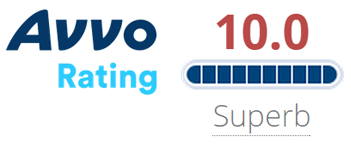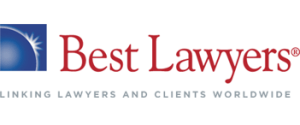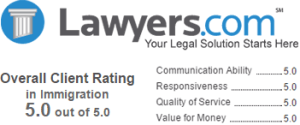
For many years, the United States was a closed shop for most foreign-born physicians. Until they were declared unconstitutional, many states had laws on the books requiring physicians to be U.S. citizens in order to obtain licenses.
From 1976 to 1991, federal immigration laws barred foreign-born physicians from obtaining temporary working (“H-1B”) status in order to perform direct patient care. A physician in H-1B status was permitted only to teach or conduct research in the U.S. for a public or nonprofit private educational or research institution or agency.
However, in 1991, Congress amended our laws to allow foreign-born physicians to qualify for temporary visas to enter the U.S. in order to qualify for medical residencies and fellowships and to perform patient care.
Client Reviews

Highly Competent Legal Services
“I work with Merritt Hawkins, the largest physician search firm in the United States. For over 20 years, we have partnered with The Law Offices of Carl Shusterman, which assists us in obtaining visas for the many international physicians we recruit. Mr. Shusterman and his staff have been an indispensable resource of expertise, allowing us to recruit international doctors in the most efficient manner possible on behalf of our clients.”
- Phil Miller, Merritt Hawkins, Dallas, Texas
Read More Reviews
Zoom Consultations Available!
Below, please find our physicians immigration guide. We also provide helpful links for physicians who are searching for job opportunities.
CONGRESS AMENDS THE LAW
The Immigration Act of 1990 comprehensively revised the H-1B category. In doing so, the section barring physicians from utilizing this category in order to treat patients was omitted, perhaps inadvertently.
Prior to its effective date of the 1990 law, the Senate passed an amendment to the law which reimposed the bar. However, the House of Representatives, heeding the pleas of small town and rural hospitals urgently in need of physicians, refused to go along with the Senate. Instead, an amended law was passed which allowed certain foreign-born physicians to obtain H-1B status in order to render patient care.
This compromise legislation, which was contained within the Miscellaneous Technical Immigration and Naturalization Amendments of 1991 (MTINA), allows physicians to obtain H-1B status by the following two methods:
- Pursuant to an invitation from a public or nonprofit private educational or research institution or agency to teach or conduct research;
or - Pursuant to an offer of employment as a physician if the foreign doctor has passed the Federation Licensing Examination (FLEX) or its equivalent as determined by the U.S. Department of Health and Human Services (HHS)
and
he or she is competent in oral and written English, or is a graduate of a medical school accredited by the U.S. Department of Education.
INS ISSUES REGULATIONS
The U.S. Immigration and Naturalization Service (INS) issued regulations in 1992 to implement the new law. These regulations provide that a foreign-born doctor seeking H-1B status must:
- have a license or other authorization required by the state of intended employment to practice medicine if the physician will perform direct care and the state requires the license or authorization;
and - have a full and unrestricted license to practice medicine in a foreign country
or
have graduated from a medical school in the U.S. or a foreign country.
The regulations further provide that the petitioning employer establish that the physician
- is coming to the U.S. primarily to teach or conduct research, or both, for a public or a nonprofit private educational or research institution or agency, and that no patient care will be performed, except that which is incidental to the teaching or research;
or - has passed the FLEX, or an equivalent examination as determined by HHS (HHS has determined that the equivalent examinations are the National Board of Medical Examiners (NBME), and the U.S. Medical Licensing Examination (USMLE);
and
is competent in English or is a graduate of a medical school accredited by the U.S. Department of Education. To demonstrate competence in English, the doctor must pass the English proficiency test given by the Educational Commission for Foreign Medical Graduates (ECFMG).
PHYSICIANS ELIGIBLE FOR H-1B STATUS
U.S. employers cannot readily recruit and obtain H-1B visas for most international medical graduates (IMGs) who are residing abroad. This is because IMGs are required to complete medical residencies in the U.S. before they can obtain state licenses. To complete a residency program in the U.S., many IMGs enter the country as nonimmigrant exchange visitors (“J-1” status). Medical residents who obtain exchange visitor status must return to their countries of citizenship or last residence for two years before reentering the U.S. as permanent residents or as H or L (intracompany transferee) visa holders. However, many J residents obtain waivers of the two-year home residency requirement. Also, many IMGs obtain H-1B visas to pursue medical residencies. IMGs who complete medical residency programs without obtaining J-1 status are eligible to be sponsored for H-1B visas by private employers and/or for permanent residence upon completion of their programs.
Graduates of Canadian medical schools are in a favored position as compared with most IMGs.
First, they are not considered to be IMGs since the U.S. Department of Education through the Licensing Commission on Medical Education (LCME) has accredited all U.S. and Canadian medical schools. This distinction is important since, in most cases, it exempts Canadians from having to complete residencies in the U.S., from obtaining exchange visitor status, and from the two-year foreign residency requirement.
Second, in over 40 U.S. states, Canadian-licensed physicians are exempted from having to take U.S. examinations in order to obtain medical licenses. These states consider the Licentiate Medical Certificate of Canada (LMCC) examination to be equivalent to the FLEX.
Since most Canadian-trained physicians may obtain state medical licenses in the U.S. without passing a U.S. examination, and because the FLEX was primarily offered at test sites in the U.S., most Canadian physicians have not taken the FLEX, the NBME or the USMLE. This is a major obstacle in obtaining H-1B status for Canadian physicians. Many rightfully object to having to interrupt their practices to take a licensing examination when they are already licensed in the state of intended employment.
HHS has refused to designate any foreign medical examinations, including the LMCC, as equivalent to the FLEX. This is unfortunate since it places the federal government at loggerheads with over 80% of the state licensing boards which recognize the LMCC as equivalent to the FLEX and prevents many qualified Canadian physicians from obtaining temporary working status in the U.S. Ironically, immigration laws permit these same Canadian physicians to secure permanent residence in the U.S. without the necessity of passing the FLEX or an equivalent examination.
OBTAINING TEMPORARY WORKING (H-1B) STATUS
Obtaining H-1B status for a physician is a three-step process:
- Obtain a prevailing wage determination (PWD) for the practice opportunity
- File a Labor Condition Application (LCA) with the U.S. Department of Labor (DOL)
- Submit an H-1B petition with the USCIS
STEP ONE: THE PREVAILING WAGE DETERMINATION
U.S. immigration laws require that all H-1B physicians be paid the prevailing wage for their occupation in the geographic area where they will be employed or the actual wage being paid by the employer to other similarly employed physicians, whichever is higher. Severe penalties may be imposed on any employer who violates this requirement.
STEP TWO: THE LABOR CONDITION APPLICATION
Once an employer has obtained a prevailing wage determination, he may proceed to submit a labor condition application (LCA) to the U.S. Labor Department. In addition to the wage requirement, the LCA requires that an employer attest that:
- The physician’s working conditions will not adversely affect those of U.S. physicians similarly employed.
- There is no strike or lockout of physicians at the facility.
- The employer has given notice of the filing of an LCA to its employees either by serving the bargaining representative of the physicians, or if there is no bargaining representative, by posting two notices that an LCA has been filed. The notice must advise that complaints regarding the LCA may be made to the Wage and Hour Division of the U.S. Labor Department. A copy of the LCA must be given to the physician.
The LCA must also contain the name, address, federal tax ID number and phone number of the employer, and the number of H-1B employees to be hired, their occupational classification according to the Labor Department’s Dictionary of Occupational Titles, their dates of employment, and salaries. The names of the physicians need not appear on the LCA. The LCA, and certain supporting documentation, must be accessible to any “interested party.” By law, the Labor Department must take action on an LCA within seven business days. It may review an LCA only for completeness and obvious inaccuracies. The Labor Department may investigate an employer to determine whether it is complying with statements contained in an approved LCA. Severe penalties may be imposed for any material misrepresentation or failure to comply with a statement contained in an LCA.
STEP THREE: THE H-1B PETITION
Once an LCA is approved, the employer may submit an H-1B petition to USCIS. The employer must establish that both the offer of employment and the qualifications of the physician meet the standards of the immigration law. The employer must demonstrate its ability to pay the appropriate wage. Documents demonstrating the physician’s education, licenses, and compliance with the English and the medical examination requirements of the law and the regulations must accompany the petition.
The physician may not commence employment in the U.S. until the petition is approved and he has either changed his status to H-1B or has obtained an H-1B visa and entered the U.S. Simultaneously, the physician’s spouse and unmarried children under 21 years of age may be granted H-4 visas/status. Although H-4 status permits one to remain in the U.S. with the H-1B physician, and to attend school, it does not permit the acceptance of employment. The initial duration of an H-1B petition is three years, with one additional three year extension of stay possible. Generally, after six years have elapsed, the physician must either have achieved permanent residence status or it is time for him to depart the U.S. However, under certain circumstances, physicians may be able to extend their H-1B status beyond six years.
OBTAINING PERMANENT RESIDENCE
A U.S. employer may obtain permanent residence (“green card”) status for a foreign-born physician if the employer can demonstrate that it is unable to locate a U.S. physician to fill the position.
An employer may obtain permanent residence for a foreign-born physician utilizing the following three step process:
- Approval of a PERM application from U.S. Labor Department (DOL)
- Submission of visa petition to USCIS
- Application for permanent residence from the USCIS or from a U.S. Embassy or Consulate abroad
STEP ONE: LABOR CERTIFICATION
Unless the physician in question is a person of extraordinary ability or his employment is in the national interest, his employer must process a PERM application on his behalf in order for him and his family to obtain permanent residence in the U.S.
The employer is typically required to place a job advertisement for a physician in an appropriate national journal. The ad must describe both the employment offered in terms of the job duties and the salary (The salary offered may not be less than the prevailing wage.) and the qualifications required to perform the job. The name of the employer need not be mentioned in the ad.
After reviewing the resumes received and interviewing any applicants who profess to be qualified for the position, the employer must demonstrate to the Labor Department that there are no U.S. physicians ready, able and qualified to perform the job.
There is an exception to the PERM requirement for physicians whose employment would be in the “national interest”. Generally, physicians who intend to practice in medically underserved areas for a minimum of five years may petition the USCIS to bypass the PERM requirement. Even physicians who are independent practitioners rather than “employees” are eligible to apply for national interest waivers.
STEP TWO: VISA PETITION
Once the Labor Department has approved the PERM application, the employer must submit an immigrant visa petition (Form I-140) within 180 days to the USCIS to classify the physician under the Employment-Based 2nd preference category (EB-2) for permanent residence.
The employer must demonstrate that they have the financial ability to pay the physician’s salary. They must also establish that the employment is full-time with no definite termination date. Documents evidencing the physician’s education and prior experience must be attached to the petition.
STEP THREE: APPLICATION FOR PERMANENT RESIDENCE
If the physician’s priority date is “current” (There are numerical backlogs which govern the length of time that a physician with an approved visa petition must wait to file an application for a green card. However, presently, the only physicians who are subject to backlogs are those born in either India or mainland China.), the physician and his family may apply for permanent residence with the USCIS at the same time that the visa petition is submitted.
Alternatively, once the visa petition is approved, they may apply for permanent residence at a U.S. Embassy or Consulate in the physician’s home country. When the application is made to USCIS, it is known as an application for “adjustment of status.” When it is made abroad, it is called an application for an “immigrant visa”.
Simultaneously with the submission of the application for adjustment of status, USCIS offices permit applications for employment authorization and “advance parole” (which is a travel document) to be filed on behalf of the physician, his spouse and children.
All applicants for permanent residence must show that they are not “excludable” from the U.S. Grounds for excludability may include certain criminal convictions, immigration fraud, and a variety of other grounds.
CONCLUSION
U.S. immigration laws and procedures are complex and are in a constant state of flux. While a clear path to immigration exists for most foreign-born physicians who obtain offers of employment in the U.S., a working knowledge of U.S. immigration laws helps to eliminate a few of the bumps along the road.








